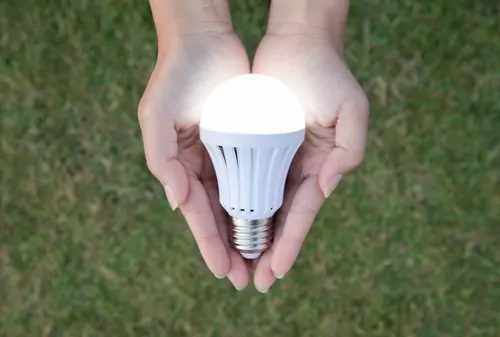LED lights have become the preferred lighting solution for many households and businesses due to their energy efficiency, durability, and versatility. They are a great alternative to traditional incandescent bulbs, which consume more energy and have a shorter lifespan. However, as with any other electronic device, LED lights have a limited lifespan that depends on various factors. In this article, we will explore the concept of LED lifespan, what affects it, and how to extend it.
Table of Contents
Vida útil LED: Understanding LED Lifespan
The lifespan of LED lights is often referred to as “Vida útil LED” in Spanish. This term refers to the period during which an LED light can function before it needs to be replaced. The average lifespan of an LED light can range from 25,000 to 50,000 hours or more, which is significantly longer than traditional incandescent bulbs that last only around 1,000 hours.
The lifespan of LED lights is affected by various factors such as temperature, voltage, current, and usage patterns. In general, LED lights tend to last longer when they are operated at lower temperatures, lower voltages, and lower currents. Excessive heat and high voltage or current can damage the LED chip, reducing its lifespan.
Tips to Extend the Vida útil de los LED
To extend the lifespan of your LED lights, it is important to follow some simple guidelines that can help to reduce their stress and ensure their optimal performance. Here are some tips to consider:
1. Choose High-Quality LED Lights
One of the most important factors that determine the lifespan of LED lights is the quality of their components. High-quality LED lights are built to last and are less likely to experience premature failure or reduced performance. When choosing LED lights, look for reputable brands that offer warranties and have a track record of producing reliable products.
2. Avoid Overheating
LED lights are sensitive to heat, and excessive heat can significantly reduce their lifespan. To prevent overheating, make sure that your LED lights are installed in a well-ventilated area and are not in contact with heat sources such as direct sunlight, heating ducts, or appliances that generate heat. You can also consider using LED lights that are designed to dissipate heat effectively, such as those with built-in heat sinks or cooling fans.
3. Optimize Voltage and Current
Another important factor that affects the lifespan of LED lights is voltage and current. Overvoltage or overcurrent can damage the LED chip and reduce its lifespan. To avoid this, make sure that your LED lights are connected to a stable power source that provides the correct voltage and current. You can also use LED drivers or resistors to regulate the voltage and current and protect your LED lights from power surges or fluctuations.
4. Use LED Lights Properly
LED lights are designed to be energy-efficient and long-lasting, but they still need to be used properly to maximize their lifespan. Avoid turning LED lights on and off frequently, as this can increase their stress and reduce their lifespan. Instead, leave them on for longer periods, especially if you are using them in areas where lighting is needed frequently, such as hallways, bathrooms, and kitchens.
5. Clean Your LED Lights Regularly
Dirt, dust, and other particles can accumulate on the surface of your LED lights, reducing their brightness and performance over time. To keep your LED lights working at their best, clean them regularly with a soft, dry cloth or a gentle cleaner. Avoid using abrasive or corrosive cleaners that can damage the LED cover or housing.
Conclusion
In conclusion, Vida útil de los LED is an important concept to understand if you want to maximize the lifespan of your LED lights. By following some simple guidelines such as choosing high-quality LED lights, avoiding overheating, optimizing voltage and current, using LED lights properly, and cleaning them regularly, you can help to ensure that your LED lights last as long as possible.
Not only does extending the lifespan of your LED lights save you money in the long run, but it also reduces waste and contributes to a more sustainable environment. LED lights are already a more eco-friendly alternative to traditional incandescent bulbs, but by maximizing their lifespan, we can further reduce our carbon footprint and energy consumption.
In addition to the tips mentioned above, it is also a good idea to consult the manufacturer’s instructions and recommendations for your LED lights, as they may have specific guidelines that apply to your model or usage scenario. If you notice any signs of reduced performance or premature failure, such as flickering, dimming, or color shift, it may be time to replace your LED lights to avoid further damage or safety hazards.

